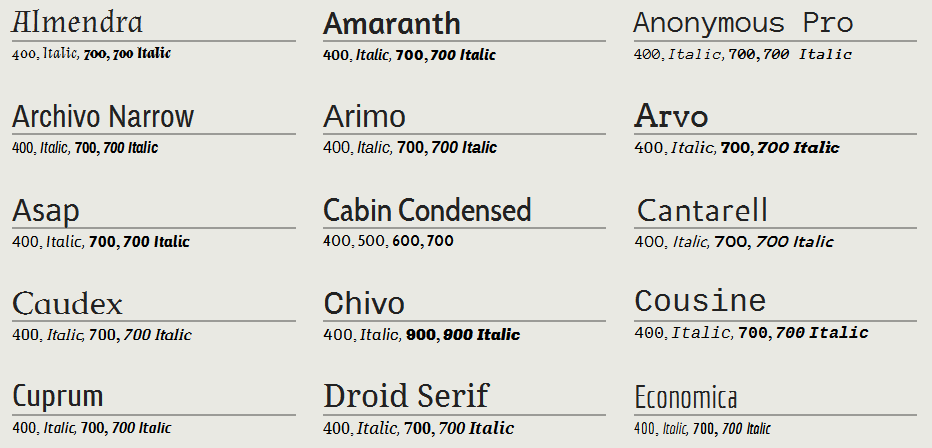Font families After the color, the font is probably the most basic property of a page. On this page I won't show any 'tricks,' but I will show the range of font variations that CSS allows. Since not all fonts are available on all computers (there are thousands of fonts, and most are not free), CSS provides a system of fallbacks. You list the font that you want first, then any fonts that might fill in for the first if it is unavailable, and you should end the list with a generic font, of which there are five: serif, sans-serif, monospace, cursive and fantasy. Font styles Most fonts have various styles within the same family, typically a bold and an italic one, often also a bold italic style, somewhat less often a small-caps and in a few cases extra-light/extra-bold or stretched/condensed versions. The table below shows a number of different styles. Unless you have a very rich collection of fonts, many of the rows will be the same.


The font-family property should hold several font names as a 'fallback' system, to ensure maximum compatibility between browsers/operating systems. If the browser does not support the first font, it tries the next font.

 0 kommentar(er)
0 kommentar(er)
